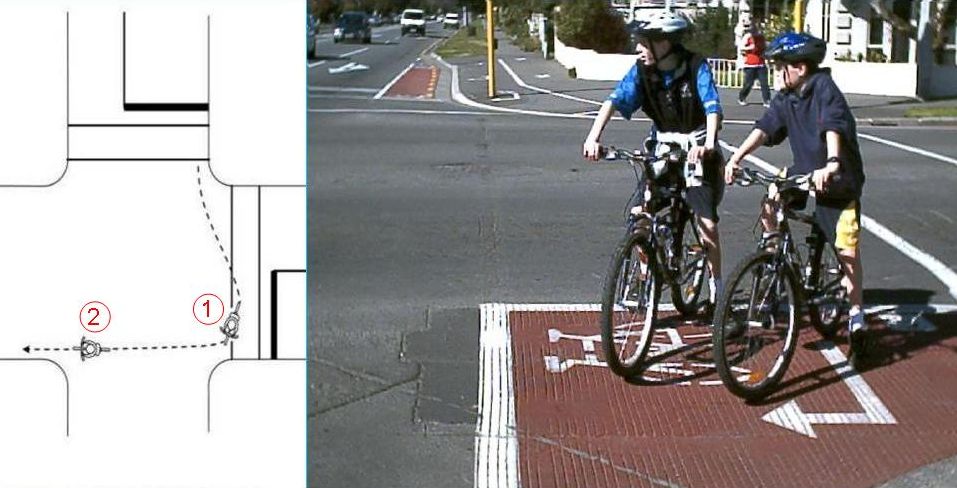 A hook turn is an indirect way for cyclists to turn right at a signalised intersection (see the diagram below). It involves moving to the far side of the intersection (position 1), keeping as far left as possible. The cyclist then waits there until the side street gets a green light and then moves with side street traffic across the intersection (to position 2).
A hook turn is an indirect way for cyclists to turn right at a signalised intersection (see the diagram below). It involves moving to the far side of the intersection (position 1), keeping as far left as possible. The cyclist then waits there until the side street gets a green light and then moves with side street traffic across the intersection (to position 2).
So it is turning right in two stages. Pavement markings can assist cyclists with undertaking this manoeuvre and explaining it to other road users, but some cyclists execute hook turns routinely even without hook turn pavement markings.
